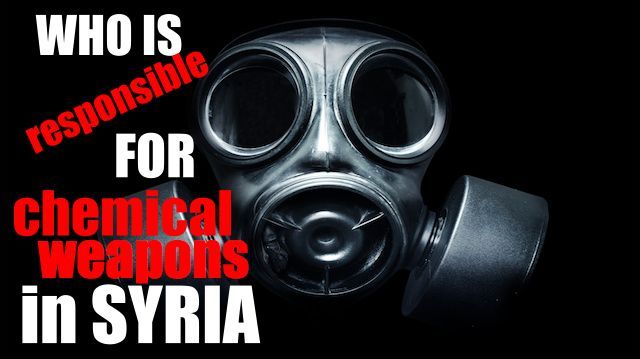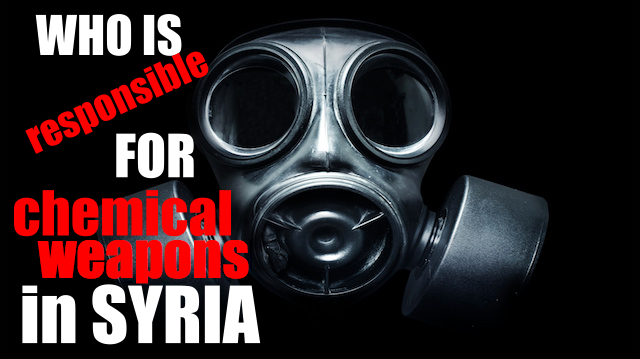
Issues within the Middle East have been ongoing for years, and the Western world is increasingly concerned about the events in Syria and the actions of the terrorist group, the Islamic State, also known as IS or ISIS.
The continued use of chemical weapons in Syria has raised questions that need to be answered and addressed. It is believed that the Syrian government has been using these weapons against its own people.
Reports suggest that mustard gas, chlorine, and possibly lewisite have been used. Before we examine who is potentially responsible, let’s focus on a brief timeline highlighting some of the main events surrounding chemical weapon use, production, and seizure in Syria over the past few years.
- In August 2012, it was officially declared that Syria possessed a stockpile of chemical agents, such as mustard gas and various nerve agents, including sarin gas. In December, just a few months later, the first alleged chemical weapon attack was reported.
- On March 20, 2013, the Syrian government requested that the UN investigate the use of chemical weapons in an attack that killed 25 people, blaming the opposition. Obama later stated that the use of these weapons was a “game changer.”
- By April 17, 2013, there had been a number of other attacks reported, utilizing phosphorus bombs and other chemical weapons. On this day, the UN Secretary-General stated that the Syrian government was hindering their investigation. Within the following days, it was believed that Bashar al-Assad’s regime maintained possession and was using chemical weapons.
- On June 4, 2013, the French government confirmed the use of sarin gas based on specimens they collected and tested from Syria. At this point, it was unclear which chemical agents had been used in past attacks or who had used them. This was followed by a major attack on August 21, claiming over 1,000 lives, many of whom were civilians.
- On September 2, 2013, France released their declassified intelligence assessment with the conclusion that sarin gas was in fact used in the attack on August 21 and that the Assad regime was responsible. The attack violated the 1925 Geneva Protocol, which essentially prohibits the use of biological or chemical weapons. One week later, Russia proposed that Syria should hand over its chemical weapons to be destroyed under international control, with the condition that the United States did not conduct a military strike against the country.
- On September 20, 2013, Syria submitted a declaration regarding its stockpile of chemical weapons to the Organization for the Prohibition of Chemical Weapons (OPCW). By October 6, the destruction of these weapons began.
- On October 31, 2013, the OPCW confirmed that Syria had destroyed all of its declared facilities that produced chemical weapons. Of the 23 sites, 21 were visited based on security issues, but inspectors confirmed that equipment had been destroyed at the remaining two locations.
- On January 7, 2014, after missing the initial deadline to remove all chemical weapons, Syria began delivering the first load, which would be destroyed using the process of hydrolysis by an internationally controlled operation.
- By April 14, 2014, the Syrian government had removed 65 percent of its total stockpile, including 57 percent of the Priority 1 chemicals.
- On July 21, 2014, the OPCW announced that Syria’s full chemical weapon stockpile had reached various international ports in order to be destroyed. Yet, in September, new chlorine gas attacks took place, and although no blame was assigned, it was strongly believed that the Assad regime was to blame.
Despite the fact that the OPCW stepped in, it’s clear that President Assad employed half truths and misleading information to avoid the disclosure of chemical weapons used by the Syrian government. Attacks have continued, with a baby reportedly killed by mustard gas, even though Syria supposedly handed over all chemical weapons in 2014.
At this point, troops in Syria and Iraq, as well as many innocent civilians, are at risk. Without further international support and engagement, eliminating these chemical weapons seems like an almost impossible task.
The recent use of chemical weapons has also been traced back to the Islamic State. The terrorist organization is believed to have access to chemical weapons with documentation and facilities to push forward production.
So, where are they getting these chemical weapons from? There are two possible scenarios known at this time. It is believed that ISIS is either making these weapons themselves or the initial stockpile reported by the Syrian government was not complete and they have taken over an unknown facility.
What does chemical warfare mean for the rest of the world?
As stated by the U.S. Secretary of State, chemical weapons are a “red line for the world.” For the past 25 years, the rest of the world has maintained the agreement to completely stop the production and stockpiling of chemical weapons.
In 2011, it was reported that 72 percent of the world’s chemical weapon stockpile had been decommissioned. For years we have worked toward the complete elimination of chemical weapons, with the hope that this will one day remove the threat of biological warfare. The future of our planet depends on it.
However, in recent years, as the rest of the world has been actively eliminating their stockpiles, the Syrian regime has been producing more.
 For all the innocent Syrian refugees seeking assistance, it’s impacting their present and future safety. There are also a lot of misinformed people worldwide blaming innocent citizens for events that they have nothing to do with.
For all the innocent Syrian refugees seeking assistance, it’s impacting their present and future safety. There are also a lot of misinformed people worldwide blaming innocent citizens for events that they have nothing to do with.
At this time, we do not need to be fighting one another — we need to come together. The world needs to address these chemical attacks throughout Syria and Iraq, sending a clear message that this will not be tolerated.
Article: 10,000 Syrian Refugees Will Find Solace in the United States
It is fairly clear that both the Islamic State and Assad’s regime have played key roles in chemical attacks over the past few years. As the conflict increases, fear and hate are spreading across the world. Unity is vital and hate is the problem — so please, get involved. Whether that means increasing your awareness, educating others, or writing letters of support, we must come together.
—The Alternative Daily
Sources:
https://www.rt.com/op-edge/320254-syria-chemical-weapons-government
https://www.armscontrol.org/factsheets/Timeline-of-Syrian-Chemical-Weapons-Activity
http://www.slate.com/blogs/the_slatest/2015/11/06/chemical_weapons_still_being_used_in_syria_likely_by_isis.html

